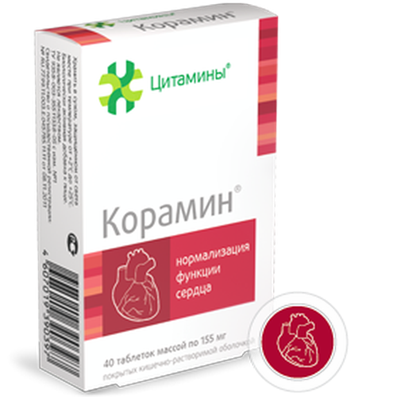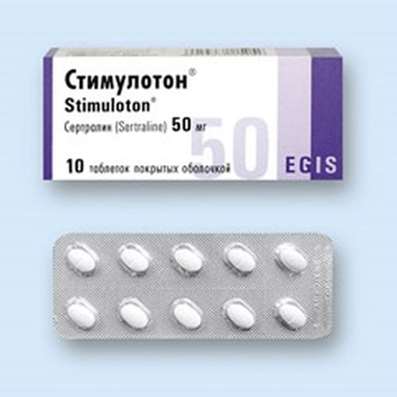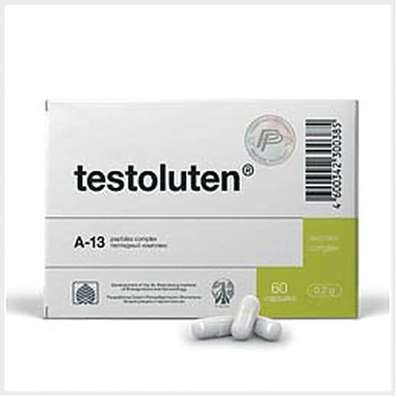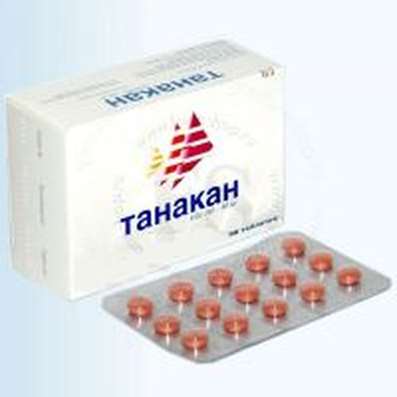Instruction for use: Amelotex
I want this, give me price
Active substance Meloxicam
ņ“’ M01AC06 Meloxicam
Pharmacological group
Non-steroidal anti-inflammatory drugs [NSAIDs - Oxicams]
Nosological classification (ICD-10)
M06.9 Other specified rheumatoid arthritis
Rheumatoid arthritis,Pain syndrome in rheumatic diseases, Pain in rheumatoid arthritis, Inflammation in rheumatoid arthritis, Degenerative forms of rheumatoid arthritis, Children's rheumatoid arthritis, Exacerbation of rheumatoid arthritis, Acute articular rheumatism, Rheumatic arthritis, Rheumatic polyarthritis, Rheumatoid arthritis, Rheumatic polyarthritis, Rheumatoid arthritis, Rheumatoid arthritis of active course, Rheumatoid arthritis, Rheumatoid polyarthritis, Acute rheumatoid arthritis, Acute rheumatism
M13.9 Arthritis, unspecified
Arthritis,Purulent arthritis (non-infectious), acute Arthritis,Pain in acute inflammatory diseases of the musculoskeletal system,Pain in chronic inflammatory diseases of the musculoskeletal system,The pain in osteoarthritis, Inflammation in osteoarthritis, Inflammatory arthropathy, Inflammatory and degenerative joint diseases, Inflammatory disease of the musculoskeletal system, Inflammatory joint disease, Inflammatory diseases of the musculoskeletal system, destructive arthritis, The disease of the musculoskeletal system, Diseases of the musculoskeletal system, Diseases of the musculoskeletal system and connective tissue, Infections musculoskeletal system, monoartrit, Non-infectious arthritis, rheumatic arthritis, Osteoarthritis, Acute inflammation of the musculoskeletal tissue, Acute inflammatory diseases of the musculoskeletal system, Acute inflammatory condition of the musculoskeletal system, Acute arthritis, Acute osteoarthritis, Post-traumatic osteoarthritis, Reactive arthritis, Chronic inflammatory diseases of the joints, Chronic arthritis, Chronic inflammatory arthritis, Chronic inflammation of the inner layer of the joint capsule, Chronic inflammation of the joint capsule,Chronic inflammatory disease of the joints, Exudative arthritis
M19.9 Arthrosis, unspecified
Change in brush with osteoarthritis, Osteoarthritis, Osteoarthrosis, Arthrosis of large joints, Pain syndrome in osteoarthritis, Pain syndrome in acute inflammatory diseases of the musculoskeletal system, Pain syndrome in chronic inflammatory diseases of the musculoskeletal system, Deforming arthrosis, Deforming osteoarthritis, Deforming osteoarthritis of joints, Osteoarthritis in the acute stage, Osteoarthritis of large joints, Acute pain syndrome with osteoarthritis, Post-traumatic osteoarthritis, Rheumatic osteoarthritis, Spondylarthrosis, Chronic osteoarthritis
M25.5 Pain in the joint
Arthralgia, Pain syndrome in musculo-articular diseases, Pain syndrome in osteoarthritis, Pain syndrome in osteoarthritis, Pain syndrome in acute inflammatory diseases of the musculoskeletal system, Pain syndrome in chronic inflammatory diseases of the musculoskeletal system, Pain in the joints, Soreness of the joints, Soreness of joints in severe physical exertion, Painful inflammatory joint damage, Painful conditions of the musculoskeletal system, Painful joint conditions, Painful traumatic affection of joints, Pain in the musculoskeletal system, Pain in Shoulder Joints, Pain in the joints, Joint pain, Joint pain with injuries, Musculoskeletal pain, Pain with osteoarthritis, Pain in the pathology of the joints, Pain in rheumatoid arthritis, Pain in chronic degenerative bone diseases, Pain in chronic degenerative joint diseases, Bone-joint pain, Joint pain, Arthritic pain of rheumatic origin, Articular pain syndrome, Joint pain, Rheumatic pain, Rheumatic pains
M45 Ankylosing spondylitis
Ankylosing spondylarthrosis, Marie-Strumpel disease, Ankylosing spondylitis, Pain syndrome in acute inflammatory diseases of the musculoskeletal system, Pain syndrome in chronic inflammatory diseases of the musculoskeletal system, Bechterew's disease, Ankylosing spondylitis, Diseases of the spinal column, Rheumatic spondylitis, Bechterew-Marie-Strumpel disease
Composition
Tablets 1 table.
active substance:
meloxicam 7.5 mg/15 mg
auxiliary substances: lactose monohydrate; MCC (microcrystalline cellulose); sodium citrate; povidone; crospovidone; silicon dioxide colloidal; magnesium stearate
Description of dosage form
Tablets, 7.5 mg: round, biconvex, pale yellow or pale yellow with a weak greenish tinge; the presence of marble and light roughness is allowed.
Tablets, 15 mg: round, biconvex, with a risk on one side, pale yellow or pale yellow with a weak greenish hue; the presence of marble and light roughness is allowed.
pharmachologic effect
Pharmacological action - anti-inflammatory, antipyretic, analgesic.
Pharmacodynamics
Meloxicam - NSAIDs (non-steroidal anti-inflammatory drugs), which has analgesic, anti-inflammatory and antipyretic effects.
The anti-inflammatory effect is associated with inhibition of the enzymatic activity of COX (cyclooxygenase) -2, which participates in the biosynthesis of PG (prostaglandins) in the area of inflammation. To a lesser extent, meloxicam acts on COX-1, which participates in the synthesis of PG, which protects the mucous membrane of the gastrointestinal tract and takes part in the regulation of blood flow in the kidneys.
Pharmacokinetics
It is well absorbed from the digestive tract, the absolute bioavailability of meloxicam is 89%. Simultaneous food intake does not change the intake. When using the drug inside at doses of 7.5 and 15 mg, its concentrations are proportional to the doses. Css are reached within 3-5 days. With prolonged use of the drug (more than 1 year), the concentrations are similar to those noted after the first Css. The range of differences between Cmax and basal concentrations of the drug after its administration once a day is relatively small and amounts to using a dose of 7.5 mg to 0.4-1 μg / ml, and when using a dose of 15 mg it is 0.8-2 μg / ml (the values of Cmin and Cmax are given, respectively).
Meloxicam penetrates through the histogematic barriers, the concentration in the synovial fluid reaches 50% of the Cmax drug in the plasma.
Almost completely metabolized in the liver with the formation of 4 pharmacologically inactive derivatives. The main metabolite, 5'-carboxymeloxicam (60% of the dose value), is formed by oxidation of the intermediate metabolite, 5'-hydroxymethylmeloxicam, which is also excreted, but to a lesser degree (9% of the dose value). In vitro studies have shown that the isoenzyme CYP2C9 plays an important role in this metabolic transformation, the isoenzyme CYP3A4 has an additional significance. In the formation of 2 other metabolites (which constitute 16 and 4% of the dose value, respectively) peroxidase takes part, the activity of which, probably, varies individually.
It is excreted equally through the intestines and kidneys, mainly in the form of metabolites. Through the intestine, less than 5% of the daily dose is excreted in unchanged form, in the unchanged form of the urine the drug is found only in trace amounts. T1 / 2 meloxicam is 15-20 hours. Plasma clearance is an average of 8 ml / min. In elderly people, the clearance of the drug is reduced. Vd is low and averages 11 liters.
Hepatic or renal failure of moderate severity does not significantly affect the pharmacokinetics of meloxicam.
Indications
osteoarthritis;
rheumatoid arthritis;
ankylosing spondylitis (Bekhterev's disease);
It is intended for symptomatic therapy, reducing pain and inflammation at the time of use, the progression of the disease is not affected.
Contraindications
hypersensitivity to the active substance or ancillary components;
period after aortocoronary shunting;
Decompensated heart failure;
complete or incomplete combination of bronchial asthma, recurrent nasal polyposis and paranasal sinuses and intolerance to acetylsalicylic acid and other NSAIDs (including in the anamnesis);
erosive and ulcerative changes in the mucosa of the stomach or duodenum, active gastrointestinal bleeding;
inflammatory bowel disease (ulcerative colitis, Crohn's disease);
cerebrovascular bleeding or other bleeding;
severe hepatic impairment or active liver disease;
marked renal failure in patients not undergoing dialysis (Cl creatinine <30 ml / min), progressive kidney disease, incl. confirmed hyperkalemia;
rare hereditary diseases, such as lactose intolerance, lactase deficiency or glucose-galactose malabsorption;
pregnancy;
the period of breastfeeding;
age up to 15 years.
With caution: coronary heart disease; cerebrovascular diseases; congestive heart failure; dyslipidemia / hyperlipidemia; diabetes; diseases of peripheral arteries; smoking; Cl creatinine <60 ml / min; anamnestic data on ulcerative gastrointestinal lesions; presence of Helicobacter pylori infection; elderly age; long-term use of NSAIDs; frequent use of alcohol; severe physical illness; concomitant therapy with the following drugs: anticoagulants (eg warfarin), antiaggregants (eg acetylsalicylic acid, clopidogrel), oral GCS (eg prednisolone), SSRIs (eg citalopram, fluoxetine, paroxetine, sertraline). In the cases listed above, to minimize the risk of developing adverse events, the minimum effective dose should be used as short a course as possible.
Side effects
From the gastrointestinal tract: more than 1% - dyspepsia, incl. nausea, vomiting, abdominal pain, constipation, flatulence, diarrhea; 0.1-1% - a transient increase in hepatic transaminase activity, hyperbilirubinemia, belching, esophagitis, gastroduodenal ulcer, bleeding from the gastrointestinal tract (including latent), stomatitis; less than 0.1% - perforation of the gastrointestinal tract, colitis, hepatitis, gastritis.
On the part of the organs of hematopoiesis: more than 1% - anemia; 0.1-1% change in the blood formula, incl. leukopenia, thrombocytopenia.
From the skin: more than 1% - itching, skin rash; 0,1-1% - urticaria; less than 0.1% - photosensitivity, bullous eruptions, erythema multiforme, incl. Stevens-Johnson syndrome, toxic epidermal necrolysis.
On the part of the respiratory system: less than 0.1% - bronchospasm.
From the nervous system: more than 1% - dizziness, headache; 0,1-1% - vertigo, tinnitus, drowsiness; less than 0.1% - confusion, disorientation, emotional lability.
From the CCC (cardiovascular system): more than 1% - peripheral edema; 0.1-1% - increased blood pressure, palpitations, flushes of blood to the skin of the face.
From the side of the urinary system: 0.1-1% - hypercreatininaemia and / or increased urea in the blood serum; less than 0.1% - acute renal failure; connection with the reception of meloxicam is not established - interstitial nephritis, albuminuria, hematuria.
From the sense organs: less than 0.1% - conjunctivitis, violation (including blurred) of vision.
Allergic reactions: less than 0.1% - angioedema, anaphylactoid / anaphylactic reactions.
Interaction
When used simultaneously with other NSAIDs (including acetylsalicylic acid), the risk of erosive and ulcerative lesions and bleeding from the gastrointestinal tract increases.
When used simultaneously with antihypertensive drugs, the effectiveness of the latter may be reduced.
With simultaneous use with lithium preparations, lithium cumulation may increase, its toxic effect may increase (control of the concentration of lithium in the blood is recommended).
With simultaneous use with methotrexate, the side effect of the latter on the hematopoietic system is increased (the risk of anemia and leukopenia, periodic monitoring of the general blood test is shown).
With simultaneous use with diuretics and cyclosporine, the risk of developing kidney failure increases.
With simultaneous use with intrauterine contraceptives, the effectiveness of the latter may be reduced.
With simultaneous use with anticoagulants (heparin, ticlopidine, warfarin), as well as thrombolytic drugs (streptokinase, fibrinolysin), the risk of bleeding increases (periodic monitoring of blood clotting indices is necessary).
When used simultaneously with colestyramine as a result of binding meloxicam, its excretion through the gastrointestinal tract is enhanced.
With simultaneous use with SSRIs, the risk of developing gastrointestinal bleeding increases.
Dosing and Administration
Inside, with food, once a day.
Rheumatoid arthritis: 15 mg / day. Depending on the therapeutic effect, the dose can be reduced to 7.5 mg / day.
Osteoarthritis: 7.5 mg / day. If the dose is ineffective, it can be increased to 15 mg / day.
Ankylosing spondylitis: 15 mg / day.
The maximum daily dose is 15 mg.
In patients with an increased risk of side effects, as well as in patients with severe renal failure who are on hemodialysis, the dose should not exceed 7.5 mg / day.
Overdose
Symptoms: impaired consciousness, nausea, vomiting, epigastric pain, gastrointestinal bleeding, acute renal failure, hepatic insufficiency, respiratory arrest, asystole.
Treatment: should be carried out lavage of the stomach, prescribe the reception of activated charcoal (within the next hour), symptomatic therapy. Kolestyramin accelerates the removal of the drug from the body. Forced diuresis, hemodialysis - ineffective (due to the high connection of the drug with blood proteins). There is no specific antidote to the drug.
special instructions
Care should be taken when using the drug in patients who have a history of peptic ulcer and duodenal ulcer, as well as patients who are on anticoagulant therapy. In such patients, the risk of ulcerative-erosive gastrointestinal diseases is increased.
Caution should be exercised and the indicators of renal function should be monitored when the drug is used in elderly patients with CHF with circulatory insufficiency, cirrhosis, and hypovolemia as a result of surgical interventions. Patients with renal insufficiency, if Cl creatinine is more than 30 ml / min, dosage adjustment is not required.
For patients on hemodialysis, the dosage of the drug should not exceed 7.5 mg / day.
With persistent and significant increase in transaminases and changes in other indicators of liver function, the drug should be discontinued and control tests should be carried out.
Patients taking both diuretics and meloxicam should take a sufficient amount of fluid.
If allergic reactions (itching, skin rash, hives, photosensitivity) occur during treatment, stop taking the drug.
Meloxicam, like other NSAIDs, can mask the symptoms of infectious diseases.
The use of meloxicam, as well as other drugs blocking the synthesis of PG, can affect fertility, so it is not recommended for women planning a pregnancy.
Influence on the ability to drive vehicles and work with machinery. The use of the drug can cause the emergence of unwanted effects in the form of headaches and dizziness, drowsiness. It should abandon the management of vehicles and maintenance of machines and mechanisms that require concentration of attention.
Form of issue
Tablets, 7.5 mg and 15 mg. For 10 tab. in the outline cell pack. 1 or 2 contour squares in a pack of cardboard.
Conditions of leave from pharmacies
On prescription.
storage conditions
In a dry, the dark place at a temperature of no higher than 25 į C.
Keep out of the reach of children.
Shelf life
5 years.
Do not use after the expiry date printed on the package.

 Cart
Cart





